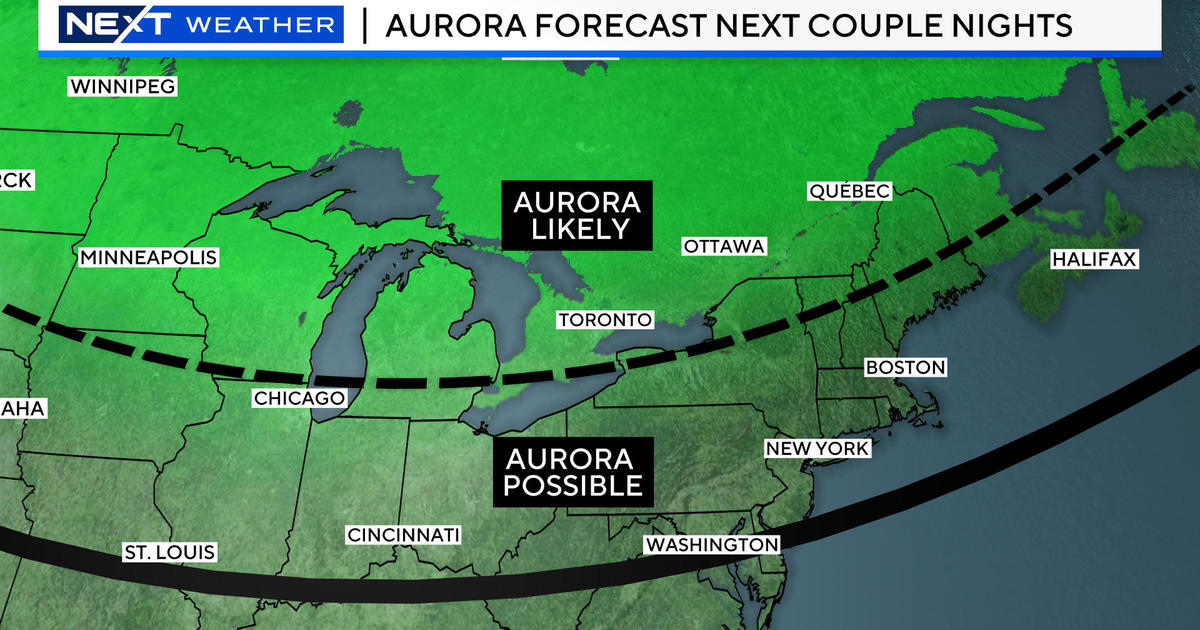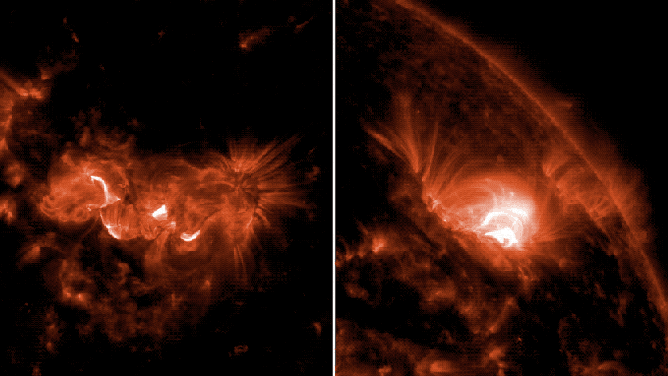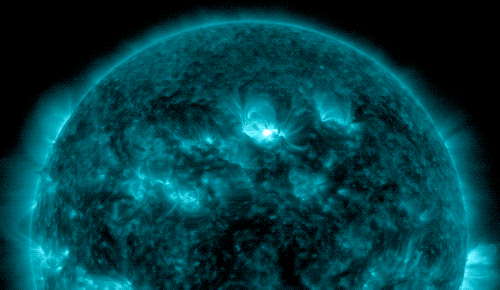
A series of powerful solar events is expected to result in northern lights being visible as far south as Alabama and Northern California this weekend. The phenomenon, known as auroras, occurs when charged particles from the sun meet the Earth's magnetic field and enter the atmosphere. This interaction creates a stunning display of lights in the night sky.
The solar activity is being fueled by several coronal mass ejections (CMEs) that have been hurtling toward Earth over the past few days. NOAA predicts a severe geomagnetic storm (G4 level) late Friday into early Saturday morning due to these CMEs, which could make the northern lights more intense and visible further south than usual.
The sun is currently in an increased period of activity in its 11-year solar cycle. NASA explains that when it reaches its maximum, scientists see a lot of sunspots and CMEs, which cause the storms. Initially, there were five CMEs identified, but what NASA described as a 'cannibal storm' gobbled up another one and they clumped together.
The northern lights are not only a beautiful sight but can also have practical implications. Because of the intensity of the storms, it's likely that disturbances of the Earth's magnetic field will result in communication disruptions and possible power outages over the weekend. However, these impacts should recover quickly.
To increase your chances of seeing the northern lights, head to a remote, high-elevation area away from urban activity like Mount Hamilton, Mount Diablo or Chabot. Look toward the north and let your eyes adjust to the darkness for several hours.
The sunspot AR3664 is one of the largest seen in decades and is nearly 200,000 km wide - about 15 Earths in size. This massive sunspot has been spitting out X-class and M-class solar flares, which are the most powerful ones.
It's important to note that while northern lights can be a fascinating sight, they should not be taken lightly. The intense magnetic fields associated with these storms can disrupt satellite communication and power systems. Voltage irregularities in power grids could lead to blackouts or even fires in extreme cases.
Historically, tree rings and ice cores provide evidence of much larger solar superstorms in the past, including the great Carrington Event in 1859. This event caused widespread telegraph outages and even set some telegraph offices on fire due to sparks igniting paper records.






